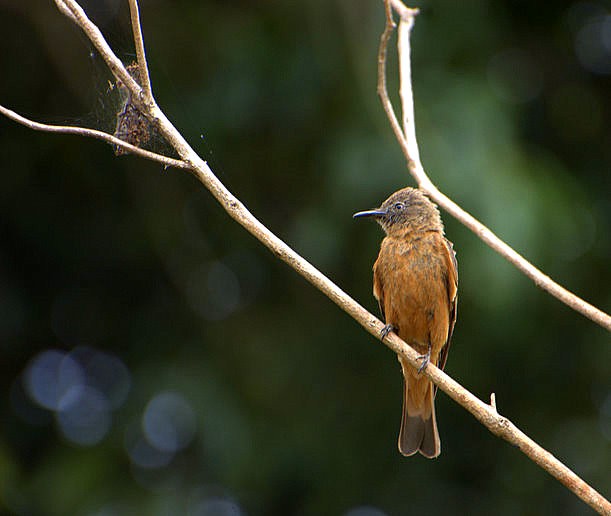Cliff Flycatcher
A species of Cliff Flycatcher Scientific name : Hirundinea ferruginea Genus : Cliff Flycatcher
Cliff Flycatcher, A species of Cliff Flycatcher
Botanical name: Hirundinea ferruginea
Genus: Cliff Flycatcher
Content
Description General Info
 Photo By dario sanches , used under CC-BY-SA-2.0 /Cropped and compressed from original
Photo By dario sanches , used under CC-BY-SA-2.0 /Cropped and compressed from original Description
The adult cliff flycatcher is about 18.5 cm (7.3 in) long. It has a wide beak and long pointed wings, resembling those of a swallow. The upper parts are dusky brown, with a distinctive rufous rump and base of tail. The tips of the wing feathers are dark, but the remaining parts are cinnamon-rufous and these are exposed in flight. The underparts are pale cinnamon-rufous, with some grey speckling on the throat. 
Size
19 cm
Nest Placement
Cliff
Feeding Habits
Cliff Flycatcher primarily consumes insects, including hymenopterans, coleopterans, and horse-flies. It feeds in pairs or family groups using unique aerial sallies, often returning to the same perch. Cliff Flycatcher hunts from exposed perches and displays swallow-like flight behavior.
Habitat
Cliff Flycatcher favors elevated terrains from sea-level to 2700 meters, particularly inhabiting cliffs, gorges, and canyons, as well as man-made structures like quarries and urban building facades. Adaptable to both mature and secondary forests near steep landforms, cliff Flycatcher is also found on sparsely wooded slopes and adapts to city buildings resembling cliffs.
Dite type
Insectivorous
General Info
Feeding Habits
Bird food type
Distribution Area
The cliff flycatcher is only found east of the Andes cordillera, and therefore is not found in Chile. All other countries in South America are represented in its range. In the Amazon basin, it surrounds the basin in the foothills, and highest elevations at tributaries' headwaters; it ranges down to central Argentina west of the Pampas, and east of the Pampas to southern Brazil, Paraguay and Uruguay; also southeast of the Amazon Basin in the Brazilian Highlands, to the Atlantic and south Atlantic coast of Brazil, about an 8,000 km (5,000 mi) stretch of coastline. Its natural habitat is in the vicinity of cliffs and gorges, canyons, rocky outcrops, quarries and road cuttings. It is also found, particularly in the south of its range, around buildings in cities, where the windowsills and facades provide a form of artificial cliff. Southerly populations are migratory while more northerly ones are sedentary. 
Species Status
Not globally threatened.
Scientific Classification
Phylum
Chordates Class
Birds Order
Perching birds Family
Tyrant flycatchers Genus
Cliff Flycatcher Species
Cliff Flycatcher